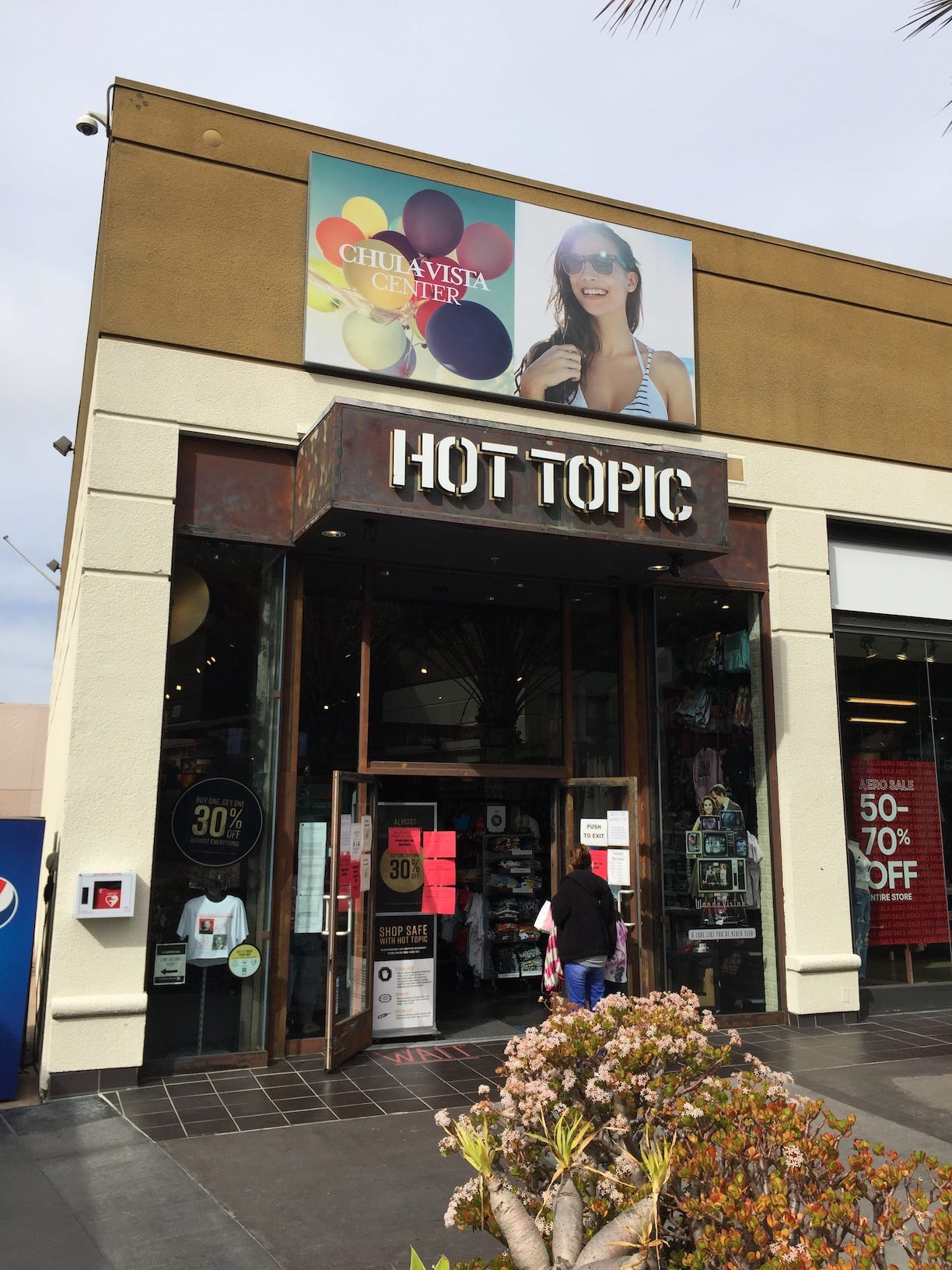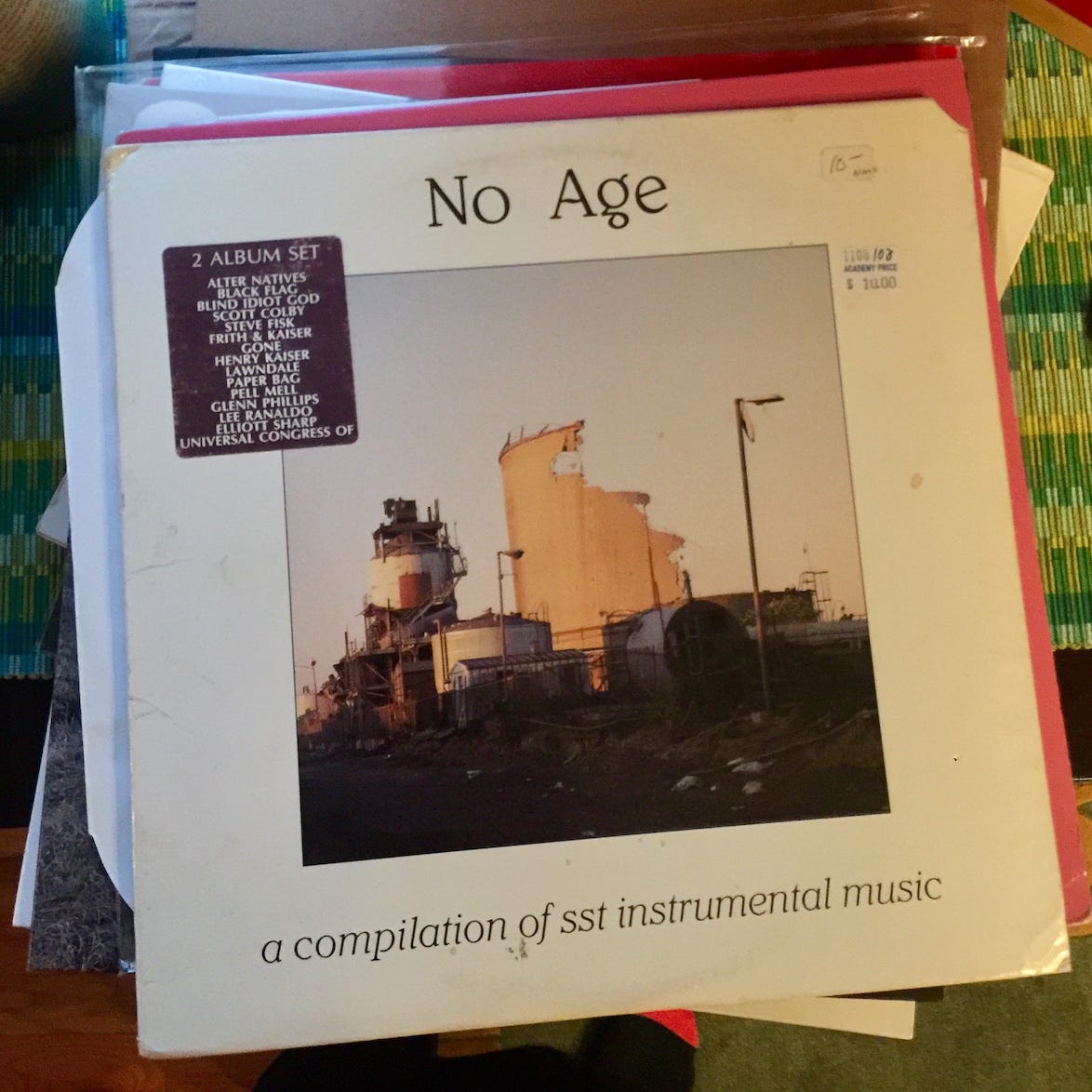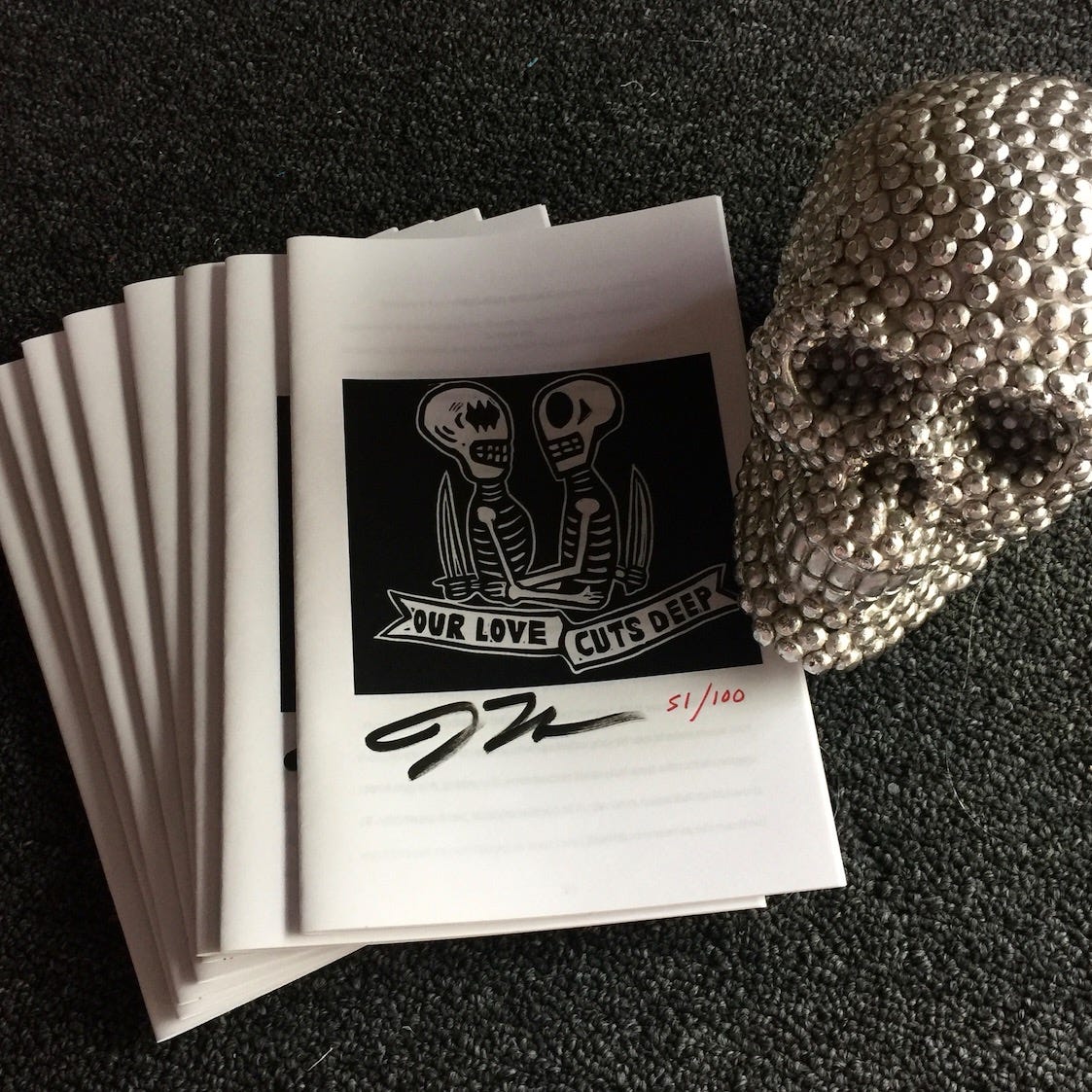This week I gave blood at the American Red Cross for the second time since the pandemic began.
As you might imagine, donations have been down because people have been staying home. The American Red Cross has also had to adjust the way it does business. In the past, blood drives were held at schools and office buildings, places where lots of people congregate. Obviously, that can’t happen anymore.
The first time I gave blood at the Red Cross’ headquarters here in San Diego. This week, the blood drive I attended was held in an old Foot Locker at a mall in Chula Vista, which was a little strange.
When I drove to the Chula Vista Center on Monday, the first thing I noticed was a massive sign for COVID-19 vaccinations. About three weeks ago they converted the former Sears store at the Chula Vista Mall into a COVID-19 super-station that can administer up to 5,000 doses a day.
I’m thrilled that south San Diego is getting this kind of attention because the population historically has been underserved, but it was a very strange feeling.
The Chula Vista Center is where I go to the movies. The AMC theater has those super comfortable reclining seats and in the mornings and afternoons there’s hardly anyone there. This is pre-pandemic, of course. I can’t recall the last time I saw an actual movie in a theater.
On President’s Day, I followed the signs taped to empty storefronts for the blood drive. The first thing they do is take your temperature at the door. Then they verify your identify and make sure you have an appointment. Before you can donate blood, the Red Cross wants to know if you ever lived in a country with Mad Cow disease, were exposed to any hepatitis outbreaks, or paid for sex in the last three months. To avoid answering these questions in an old Foot Locker, you can download the American Red Cross app and on the day of your appointment complete the survey to obtain a Rapid Pass. It’s worth it because you can manage your appointment and that’s where you’ll get your results.
Why is that important? Because the Red Cross will test your blood for COVID-19 antibodies and they’ll let you know if they detect any. This will tell you if you’ve had COVID-19 but weren’t symptomatic. (If you had the symptoms, you’d know.) However, because we don’t know how long the antibodies last, if you had COVID-19 it will let you know if you still have them. Since we know that it’s possible to catch COVID-19 more than once, we know those antibodies don’t last forever.
Once you’ve been cleared to bleed, the first step is a hemoglobin test. If you’re low on hemoglobin, they won’t take your blood. This helps reduce the number of people who pass out after donating blood. It still happens, though not as often.
Then they take you to a medical table, set up the collection bag, and take your blood. They give you a little foam thingy to squeeze every 3-5 seconds. The blood bag sits in a little swing that rocks back and forth so that the blood doesn’t coagulate.
The people were all super nice and friendly. The guy who prepped me asked me if I had any allergies. Then he leaned in and whispered, “Mother in law?”
We both laughed even though he’s probably told that joke thousands of times. I imagine some people really need to hear a joke at that moment, and I appreciated the effort.
Then he left me alone while he prepped the next donor. The radio was loud and tuned to a classic rock station. I grew up listening to classic rock radio so it’s always interesting to hear what’s considered “classic” these days. Blondie, Aerosmith, Credence Clearwater Revival. So far so good.
I sat back and squeezed my foam thingy and tried to imagine the space’s former life as a Foot Locker. Sweatshop labor stacked to the ceiling. Guys in referee shirts asking me every three minutes if I needed help finding anything. This was definitely a much better use of the space.
At one point three different people were singing, “I feel like making love,” and filling in that little guitar riff—da-da-umm—with soft moaning sounds. Not what I was expecting, but I suppose you need something to make the time go by when your job is jab people in the arm and collect blood all day.
When I was done, a woman approached my table to take out the needle and process my donation. While I don’t have trouble saying, “I donated blood today” thinking about my blood as a donation trips me up.
“A positive?” the woman asked.
“Yeah,” I said and immediately began to wonder how she knew my blood type just by looking at it. “Why do you ask?”
“I can tell.”
“You mean…” I didn’t know what I meant.
“People think I’m crazy,” she continued, “but I can always tell.”
Interesting.
Was she messing with me? Or was she some kind of blood oracle? How much further does society need to collapse before someone who can sense someone’s blood type becomes one of the most important people in the community?
The whole process took about 20 minutes but there’s a mandatory 15-minute period where you have to wait to make sure you don’t pass out. There’s free juice and cookies. The way the juice boxes and cookie packets were arranged on the table reminded me of kindergarten. If there had been a mat to sleep on, I 100% would have taken a nap.
Back in the dystopia mall, I was struck anew by the strangeness of the situation. Every third store was closed and those that were open were either going out of business or covered in COVID-19 notices. Some stores only let in a few people at a time, but that didn’t seem to be an issue as there was hardly anyone at the mall.
There were exceptions. There was a line outside of Victoria’s Secret for some President’s Day sale, I presumed. Signs outside the Guess store advertised a store-wide sale of 50% off. Another sign declared, “Take an additional 60% off.” The whole thing confused me. I couldn’t imagine wanting something, anything with a Guess logo on it. Did that additional 60% really do the trick and lure people inside? Was that the threshold that made people think it was worth risking their lives for?
The Hot Topic was the most unsettling. I didn’t know those stores still existed. A display of Wanda Vision T-shirts sat pilled near the entrance. Was Disney punk now? There were so many signs displaying COVID-19 protocols plastered on the windows it resembled a low-end liquor store. To enter the Hot Topic, you had to wait for someone to let you in, like dining at a restaurant. “Good afternoon, and welcome to Hot Topic. Would you like to start with some spiked bracelets or could I interest you in a miniature Misfits backpack?”
You know what’s a hot topic? The fucking pandemic.
Worse than the empty stores and deserted corridors and late capitalism in retreat, was the music. Even though the mall was operating at maybe a tenth of its capacity, hidden speakers blared awful pop music at a high volume that was too loud to ignore.
“I wanna love tonight. I wanna see the light…”
I took a short video and sent it to a friend. (Hi Josh!) He texted back, “I bet David Lynch is standing right behind you.”
At that point I felt like I needed to get out of there. As I hurried to my car I wondered what it all meant. Were health care and retail on a collision course? Would chain stores ever recover from this? Aside from the loss of jobs, was it necessarily a bad thing if they didn’t make it? How badly do we need retailers that sold marked up goods that exploited people, places, and natural resources?
My trip to the mall this week was the first time I’ve considered what recovery will look like after the pandemic. As a former small business owner, I spent the pandemic worrying about my shop and the businesses around me, but this is a whole other scale of magnitude.
Instead of doom and gloom, what if what’s happening at the Chula Vista Mall represents an opportunity? If the government and non-profit organizations can turn the unused portions of a mall into life-saving enterprises, what’s stopping them from turning empty stories into childcare facilities or job training sites or tutoring centers or language institutes for those who want to learn English as a second language? What’s stopping us from having campuses in every community that offer goods and services we actually need instead selling shit that corporations have to trick us into buying?
I didn’t expect a trip to the mall to turn me into a socialist, but instead of trying to recover from the events in the past, perhaps we should be reimagining what the future will look like.
PssSST!
Since no one wrote in with a better suggestion, this feature about the book I’m currently writing about SST Records will keep its name at least for another week.
This week I’m interviewing a former SST employee, someone who managed one of SST’s best-selling bands, and possibly a drummer. I love talking to drummers. Why is that? Because when a band is popular no one wants to talk to the drummer. They want to talk to the vocalist or guitarist. But drummers are no less vital to the operation and they see everything. Drummers suffer from the stereotype that all they do is bash and smash all day when they are often the most intelligent member of the band. They’re like catchers in baseball: they take the most abuse and have to work the hardest but at the end of the day they know their shit. Give me a drummer over a prima donna singer or shredder any day.
Today I want to talk about the SST record that’s consumed a great deal of my attention this week, a remarkable compilation called No Age (SST 102).
To say that Greg Ginn, founder of Black Flag and SST Records, was interested in instrumental music is an understatement. Toward the end of Black Flag’s run, he started writing instrumental songs and incorporating them into the set. While the record Family Man is famous (or infamous depending on your point of view) for introducing Henry Rollins to the world as a spoken word artist, Side Two was all instrumental. So was the EP The Process of Weeding Out, which many fans interpret as the moment when Mr. Ginn stopped giving a fuck.
During Black Flag’s final ill-fated tour across America in 1986, one of the opening acts was Gone, Ginn’s all instrumental solo project.
Given his passion for instrumental music, it doesn’t seem too far-fetched that Ginn would want to release a compilation of instrumental music, but that doesn’t make it any less unusual. Some of the musicians were already on the label when Ginn came up with the concept, others were suggested to him by other SST employees and subsequently brought into the fold. The result was a double album called No Age.
No Age’s front cover features a photo of an industrial hellscape, but what looks like a bombed out fuel depot is actually a storage tank that was being demolished at the nearby Wilmington refinery. The shot was taken by a photographer who’d done another album cover for the label back in the early ‘80s.
The back cover is a master class in PR. SST employee Michael “Spaceman” Whittaker was given the unenviable task of describing each cut, which was a tough assignment since there aren’t any vocals or lyrics to latch onto. “When there is nothing, anything can happen. Welcome to… No Age” reads the headline at the top of the back cover. One former employee I talked to said that sometimes when Whittaker had a lot of writing to do he would take LSD.
I’m not going to break down the tracks (I’m all out of acid) but let’s take look at the Four Sides:
SIDE ONE
Black Flag, Blind Idiot God, Henry Kaiser, Elliot Sharp, Lee Ranaldo
SIDE TWO
Lawndale, Glenn Phillips, Pell Mell, Paper Bag
SIDE THREE
Scott Colby, Lawndale, Paper Bag, Universal Congress Of, Steve Fisk
SIDE FOUR
Gone, Alter Natives, Elliott Sharp, Frith & Kaiser, Gone (There’s a second Gone track at the end, though it’s not listed on the album cover. I guess the LSD must have worn off.)
My question is where are the Meat Puppets? What about the Minutemen? Both bands had a couple of great instros. One can make the argument that Ginn wanted to promote bands that were touring, but that would disqualify Black Flag and Pell Mell. Nor was Black Flag solely an instrumental band and Steve Fisk often included vocal tracks in his sound collages.
Quiztune for you: If each album side was a concert, a small private show of four to five songs, which one would you go to? Those who answer “correctly” i.e. agree with my selection, will get a shout out in next week’s newsletter.
Our Love Cuts Deep
Now that Valentine’s Day is over we can get back to talking about bad love. This short story I wrote has a marriage on the rocks, a terrible food truck, and a trip to Mexico that goes disastrously awry.
In case you missed the announcement last week (scroll down for the sad news), Golondrina has officially closed. I’ve lowered the price on these zines I made during the pandemic to make room for some new projects.
I received a bunch of orders yesterday on Instagram so if you get your order in now (Wednesday morning) and it will ship today. I’m down to about 50 of these limited edition zines so get yours while you can.





